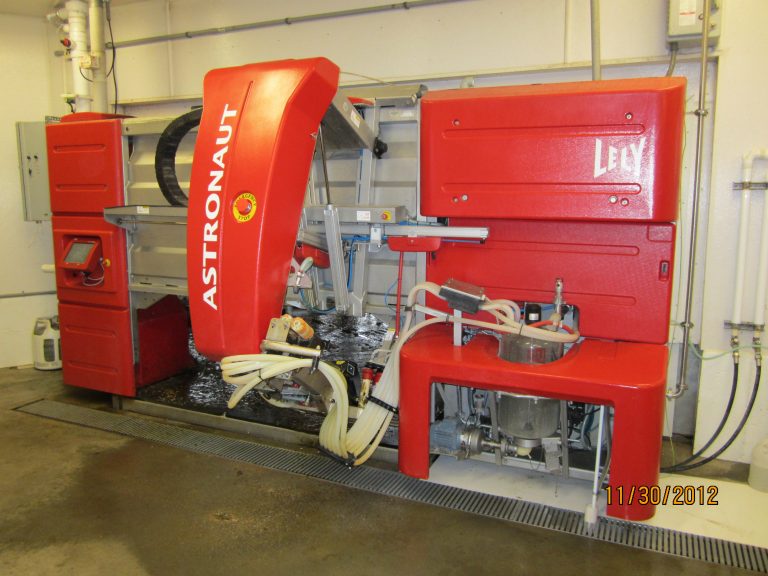
Starting in 2009, the Pasture Dairy Center at the W.K. Kellogg Biological Station pioneered automatic robotic milking combined with data-driven intensive rotational grazing methods for dairy cattle. After 15 years of innovation and education related to robotic milking and rotational grazing, the Pasture Dairy Center project was completed in 2024; cows and equipment have been sold to other farms in need. The robotic milkers used at KBS were the second and third such units installed in Michigan, and combined they amassed over 1,500,000 milkings between the two machines. These robots remained operational for 15 years and were instrumental in informing the rapid adoption of robotic milking systems across Michigan.
Dr. Santiago Utsumi led research at the Pasture Dairy Center, including those that pioneered methane and nitrous oxide emission measurements with cattle and connected greenhouse gas emissions to management practices. Other scientists, including Dr. Janice Siegford, determined how automatic milking systems influenced dairy cow behavior, health, welfare and management decisions. Along the way, a partnership with Dr. Paul Bartlett in the MSU College of Veterinary Medicine explored how to eliminate Bovine Leukemia Virus from dairy herds via selective culling of infected and contagious cattle.
Dr. Utusmi also discovered how to combine intensive rotational grazing guided by data with robotic milking. Data driven pasture management was fine tuned for optimizing forage production and quality to sustain high producing dairy cows. Crucial to this effort was the integration of weekly forage measurements using an ATV and laser guided forage biomass measurement system. This provided data on growth rates that could be used to predict optimal rotations, forage surpluses (for harvesting as winter feed) and upcoming deficits when supplementation was necessary.
